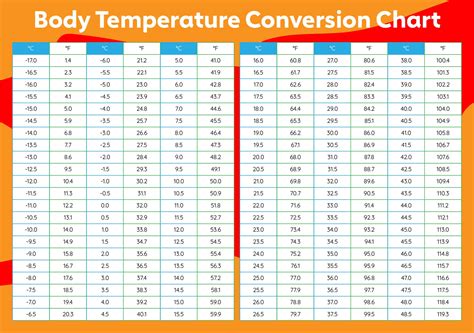220 Celsius Is What In Fahrenheit
Kalali
Mar 28, 2025 · 4 min read

Table of Contents
220 Celsius is What in Fahrenheit? A Comprehensive Guide to Temperature Conversions
Are you a chef meticulously crafting a perfect souffle? A scientist carefully controlling an experiment? Or perhaps just someone curious about the relationship between Celsius and Fahrenheit? Whatever the reason, understanding how to convert between these two common temperature scales is a valuable skill. This comprehensive guide will delve into the conversion process for 220 degrees Celsius to Fahrenheit, exploring the underlying mathematics and providing useful tips for various applications.
Understanding Celsius and Fahrenheit
Before diving into the conversion, let's briefly understand the two scales:
-
Celsius (°C): This scale, also known as the centigrade scale, is based on the freezing and boiling points of water. Zero degrees Celsius (0°C) represents the freezing point of water, and 100 degrees Celsius (100°C) represents its boiling point. It's the primary temperature scale used globally, particularly in scientific contexts.
-
Fahrenheit (°F): This scale is primarily used in the United States. It has a less intuitive relationship to the properties of water. The freezing point of water is 32°F, and the boiling point is 212°F.
The Conversion Formula: Celsius to Fahrenheit
The formula for converting Celsius (°C) to Fahrenheit (°F) is:
°F = (°C × 9/5) + 32
This formula takes the Celsius temperature, multiplies it by 9/5 (or 1.8), and then adds 32 to obtain the equivalent Fahrenheit temperature.
Converting 220°C to Fahrenheit
Let's apply the formula to convert 220°C to Fahrenheit:
°F = (220°C × 9/5) + 32
°F = (440) + 32
°F = 442
Therefore, 220 degrees Celsius is equal to 442 degrees Fahrenheit.
Practical Applications of Temperature Conversions
Understanding this conversion is crucial in various fields:
1. Cooking and Baking
Precise temperature control is vital for successful cooking and baking. Recipes often specify temperatures in either Celsius or Fahrenheit. The ability to convert between these scales ensures you achieve the desired results, whether you're baking a cake at 175°C (347°F) or roasting a chicken at 200°C (392°F). Knowing that 220°C translates to 442°F allows for accurate adjustments in oven settings if a recipe uses a different scale.
2. Scientific Experiments and Research
Many scientific experiments require precise temperature control. Researchers often work with instruments and equipment calibrated in either Celsius or Fahrenheit. Understanding the conversion is essential for accurate data recording, analysis, and interpretation. For instance, in materials science, the properties of a material might be significantly different at 220°C (442°F) compared to a slightly lower or higher temperature.
3. Meteorology and Climate Science
Meteorological data is often presented in Celsius, but many people are more familiar with Fahrenheit. The ability to convert between the scales is crucial for communicating weather information effectively to a broader audience. Understanding that a high temperature of 220°C (442°F) is exceptionally high and unlikely on Earth, except perhaps in highly specialized industrial contexts, shows the importance of understanding the scale.
4. Industrial Processes
Numerous industrial processes involve precise temperature control. From manufacturing to refining, maintaining specific temperatures is often critical for product quality and safety. Knowing how to convert between Celsius and Fahrenheit enables effective monitoring and adjustment of temperatures in these processes. In metalworking, for example, 220°C (442°F) might be a crucial temperature for annealing or heat treating certain metals.
5. Automotive and Mechanical Engineering
Engine temperatures, particularly in high-performance vehicles, are often monitored and controlled. The ability to convert between Celsius and Fahrenheit is essential for maintaining optimal engine performance and preventing overheating.
6. Everyday Life
While less critical, knowing how to convert between Celsius and Fahrenheit can be helpful in everyday life. This is especially true for international travelers or individuals working with appliances from different countries. Understanding temperature scales helps to understand weather reports, cooking instructions, and other situations requiring temperature awareness.
Beyond the Basic Formula: Online Converters and Apps
While the formula provides the core method for conversion, several online calculators and mobile apps can automate the process. These tools are convenient and can save time, particularly when performing multiple conversions. They are a great way to verify your calculations using the formula.
Tips for Accurate Conversions
- Double-check your calculations: Always verify your results, especially in critical applications, by re-doing the calculation or using an online converter.
- Understand the context: Pay close attention to the specific context of the temperature measurement. The same temperature can have vastly different implications depending on the material or process involved.
- Use appropriate significant figures: When reporting your converted temperature, use the appropriate number of significant figures to reflect the accuracy of the original measurement.
Conclusion: Mastering Temperature Conversions
The ability to convert between Celsius and Fahrenheit is a valuable skill applicable across various fields. Knowing that 220°C is 442°F is not just a matter of simple calculation; it's about understanding the underlying principles of temperature measurement and its importance in different contexts. By mastering this conversion, you enhance your understanding of the world around you, from cooking a perfect meal to understanding complex scientific processes. Remember to utilize available resources, such as online converters and apps, and always double-check your work to ensure accuracy and precision. Through consistent practice and application, you will become proficient in temperature conversions and apply this knowledge effectively in diverse situations.
Latest Posts
Latest Posts
-
How Much Is 4 Liters In Gallons
Mar 31, 2025
-
What Does The Study Of Ecosystems Consist Of Site 1
Mar 31, 2025
-
Is Uranium Glass Safe To Handle
Mar 31, 2025
-
How Many Inches Is 185 Cm
Mar 31, 2025
-
Is 9 A Rational Number Or Irrational
Mar 31, 2025
Related Post
Thank you for visiting our website which covers about 220 Celsius Is What In Fahrenheit . We hope the information provided has been useful to you. Feel free to contact us if you have any questions or need further assistance. See you next time and don't miss to bookmark.
